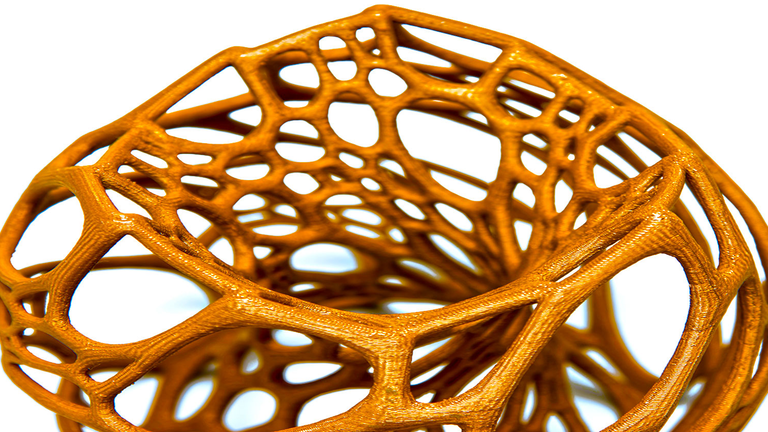From quick designs to lower costs, generative design can provide many benefits to property developers. Discover within the most impactful potential contributions.
Artificial intelligence is taking the world by storm. It’s embedded into one industry after another.
And yet, many people don’t understand how powerful this technology is. They believe that its use is still limited to gadgets and mobile technology.
But this isn’t true.
AI is becoming increasingly present in more and more industries, from biotechnology to architecture and engineering. And recently, it’s real estate that’s experiencing the force of this emerging technology.
As a result, generative design in property development has become a popular trend.
You might wonder what AI has to do with real estate and the use of generative design in property.
The truth is, generative design and, more specifically, generative design programs, look set to turn the industry on its head.
Generative design eliminates the need for manual design and modelling.
Generative Design is a method that uses a computer program to create a design output (e.g. image, architectural models, sound, animations, etc). The program follows a set of rules or algorithms – usually based on parametric modeling.
You only have to input the relevant parameters and the program will automatically come up with all of the possible designs. Depending on constraints like size, materials, and manufacturing, you can select a model that meets all your needs.
The impact of generative design on every stage of property development is substantial. Let’s take a look at some of the biggest benefits if you’re to utilise this technology.
1. Reductions in Waste and Cost at the Design Stage
Architects, engineers, and builders face a common challenge. They need to do more in less time while keeping costs as low as possible. Traditionally, there wasn’t a way to make this happen in the long run.
To complete projects to a high standard, developers and their teams had to sacrifice either time or money. More often than not, they ended up cutting corners on both.
It’s because the workload, much of it iterative, was too cumbersome for the size of the workforce.
This is where generative design steps in, which aims to change all of this.
Generative design engine technology can save a lot of time. It minimises manual labour at the design stage by automating time-consuming tasks. Developers can then shift their focus to making strategic decisions, such as figuring out how to make the projects more profitable.
In addition to reducing design time, the program allows you to use the minimum necessary quantities of materials and no more. The built-in algorithm can spit out designs that meet all your requirements with minimal material usage. This alone can result in significant savings.
It also has a positive impact on the environment, showing that you’re a responsible developer.
According to research, 37% of design firms are currently using generative design. Many of them have rerouted the time and money saved to more productive uses. You could say that they’re protecting the interests of everyone involved, which includes the clients and the general public.
2. The Use of Up-to-Date Data in Design
Compliance is critical in property development. Your project isn’t going anywhere if it’s not compliant, and you could be out a lot of money in fines and losses.
You don’t want to wait until your project is under development to start looking at compliance. Property developers must comply with local and federal regulations from the jump, which is totally possible with generative design.
It does so by allowing you to create building designs that are compliant with all regulations by default. You don’t have to go back and forth as you figure out how to comply. All of the relevant data are built-in and they’re regularly updated.
As you can imagine, this can save you and your team a staggering amount of time. In many cases in the past, it can take weeks to get all the compliance work done before you can design in earnest.
With a generative design program, there’s no need to invest this much time and effort. You’ll know from the start that your developments comply with all regulations.
3. Changes in Construction
Generative design is applicable far beyond the initial development stages. For one, it also helps you optimise the construction process from start to finish.
A research project called Crane Position Optimization illustrates this.
The project involved experiments related to assembling a building using precast panels.
The algorithm took into account multiple factors to determine the optimal construction process. These included panel weights, equipment capacities, and truck positions.
The team could use the platform to select among hundreds of processes and arrive at a suitable one. These experiments didn’t cost anything since they all happened within the platform. The developers could find an optimal process and use it for the building stages.
Generative design software can simulate building environments to a high degree of accuracy. When a team has an ideal process in place, they could share it with everyone involved.
4. Ability to Produce Concepts Quickly
To attract new clients, architect firms often offer initial concepts free of charge. Of course, this can be costly if a lot of time, money, and effort gets spent before the firm can land a client.
All architectural firms are aware of the cost of these free concepts. That’s why you can always expect them to prioritise paid work.
If you ask for a free concept, it may take weeks before you get it. You’ll probably have to go back and forth with the architect and push the deadline even further.
With generative design, you can create preliminary concepts in record time.
Find the proposed development site and enter all the relevant parameters, and then the software will do all of the work for you. You can compare multiple designs and choose one or more that fit the client’s specifications.
Plus, this can impress investors when you’re trying to secure funding for the project. Investors are more likely to give you the requested funds in the presence of timely and accurate plans.
With this in mind, it doesn’t make much sense to continue to invest in manual labour to do the design.
Judging by the potential of generative design, it’s only a matter of time before it becomes the norm. You’ll want to take advantage of this trend sooner, rather than later. For one, it’s a good way to get a leg up on the competition.
5. New and Unique Solutions
Oftentimes, a generative design program will come up with designs you’ve never thought of. After all, computers can crunch incredible amounts of data, and that’s perfect for the iterative nature of generative design.
As a result, you can count on getting unique features that might turn out to be beneficial.
For example, generative design proved to come in handy when the Seattle-based LMN Architects had to design a concert hall for the University of Iowa Voxman School of Music. The specs called for the hall to act as a light and air distributor, an acoustic reflector, and a unique architectural feature.
With traditional methods, the architects would’ve had to spend a lot of time with no guarantees of coming up with anything too spectacular. But with generative design, they managed to create a structure that met all specifications in a breathtaking design.
Furthermore, it allowed the builders on-the-spot direct application of everything the architects designed.
This is the power of generative design engine technology. Use it to create something truly unique that’s certain to set your design apart.
A New Era of Development
Now you can see why generative design in property development is such a big trend. Used properly, this technology can introduce positive changes to all aspects of your projects.
The above describes only some of the many benefits in store for property developers. Early adopters of the technology have made their processes more streamlined and efficient.
If you wish to do the same, Archistar can be the right tool.
It uses generative design in its design functions. From the assessment of viable development sites to compliant building designs, you can use Archistar for every stage of your developments.
To see how Archistar works in greater detail, Get started for free: [https://www.archistar.ai/]


